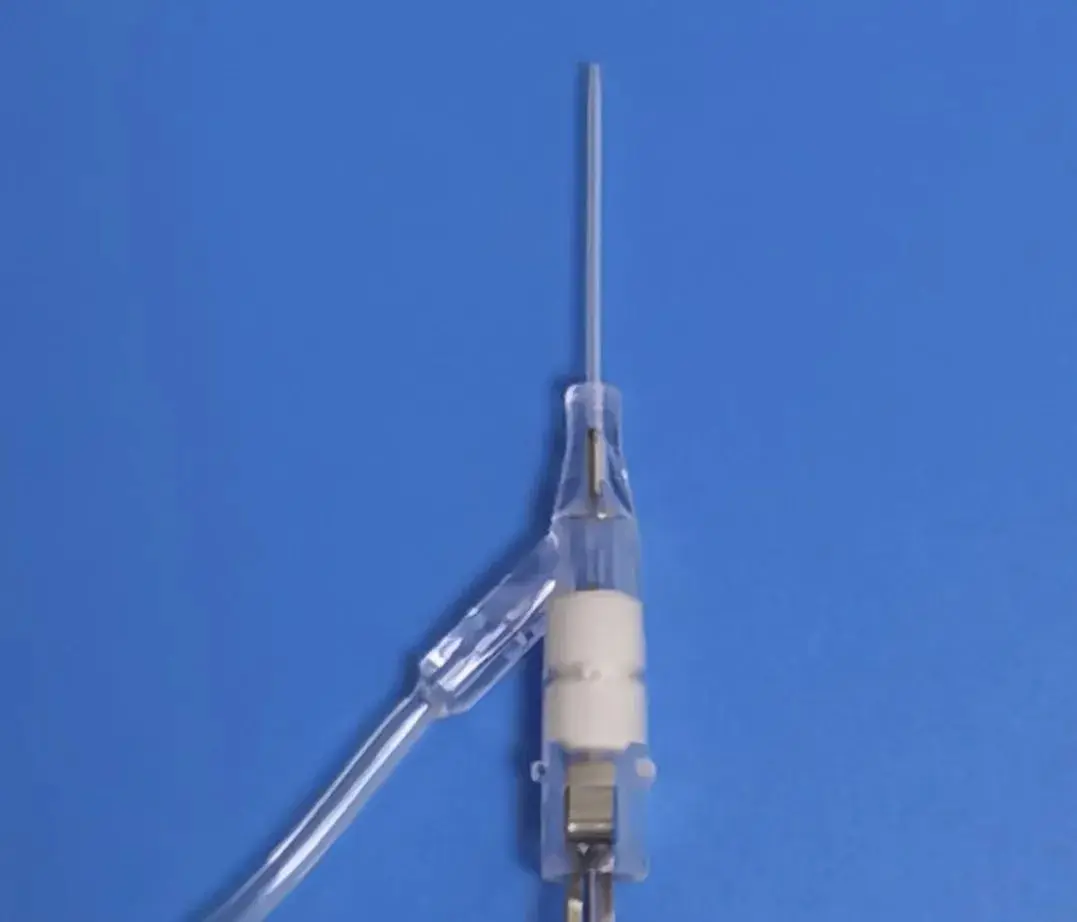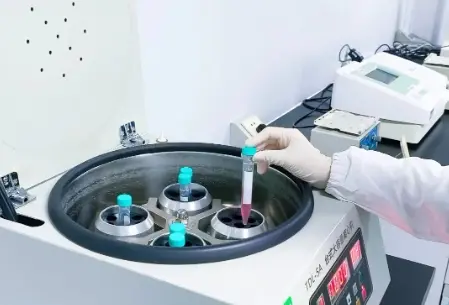
EMC EMI Testing Laboratory
EMC/emi testing is a crucial step in the design and manufacturing process of electronic devices. Regulatory bodies, including the FDA, FCC, and ISO, have set specific limits on the emissions of electronic devices. These Electromagnetic Compatibility (EMC) regulations provide higher reliability and safety for anyone using electrical and electronic equipment by ensuring that devices do not interfere with the normal operation of other devices and are not rendered inoperable by interference from other devices' emissions. Failure to pass EMC compliance testing can result in fines and product recalls.

Therefore, purchasing tools that can identify potential EMC/EMI issues before conducting EMC testing would be a wise investment.
Although EMI and EMC are very similar, there are some subtle differences between them.
What is EMI?
Electromagnetic Interference (EMI), sometimes also known as Radio Frequency Interference (RFI), refers to electromagnetic energy that disrupts the operation of electronic devices. Sources of EMI can be anthropogenic, such as switched-mode power supplies, personal computers, and other electrical devices, or naturally occurring, such as thunderstorms, solar radiation, and even cosmic noise.
What is EMC?
Electromagnetic Compatibility (EMC) refers to a device's ability to operate as intended in an environment with other electrical devices or sources of electromagnetic interference without affecting other devices. A device complies with EMC standards when its impact on the electromagnetic environment is not significant enough to adversely affect other devices and systems.
What are EMI and EMC tests?
To ensure compliance with national and international EMI and EMC regulations, many companies hire professional testing organizations to provide services. These tests are costly (even if the product fails), so some companies also conduct internal EMC pre-compliance testing. If they have sufficiently advanced laboratories, companies can also conduct internal EMC compliance testing.
EMC/EMI tests are generally divided into two categories: immunity tests and emissions tests.
Types of EMC Tests
When electronic products are submitted to EMC testing laboratories, these laboratories conduct various types of EMC tests. Generally, EMC tests are divided into two categories: immunity tests and emissions tests.
Immunity Tests
Immunity tests involve emitting radiofrequency energy towards the device under test (DUT) to determine if the DUT can operate normally in such an environment.
Emissions Tests
Emissions tests measure the radiofrequency emissions (both radiated and conducted) of the DUT to determine if its emission levels exceed the limits specified by the corresponding standards. Emissions tests include radiated emissions and conducted emissions tests.
Radiated Emissions
Radiated emissions refer to the electromagnetic energy intentionally or unintentionally released by electronic devices. Radiated tests ensure that the energy emitted by the DUT or device does not exceed the corresponding limits.
Conducted Emissions
Conducted emissions refer to the coupling of electromagnetic energy from the device to the power line. Like radiated emissions, the conducted emissions of electronic devices are also regulated by different regulatory bodies, so testing is conducted to ensure that the energy emitted by the device does not exceed the corresponding limits.
EMI/EMC Test Applications and Standards
EMI/EMC testing is part of the product development process and is mandatory in most markets. Although all electronic devices must undergo EMC testing, here are some of the most common EMC test application scenarios and the standards that devices and equipment need to meet.
Segment | Device Type | Standards |
ISM Medical | Industrial, Scientific, and Medical Equipment | CISPR 11, EN 55011, CFR Title 47 Part 18 |
Medical Electrical Equipment | EN 60601-1-2 | |
Automotive | Vehicles, Ships, and Internal Combustion Engines | CISPR 12, EN 55012, CFR Title 47 Part 15 (*) |
In-vehicle Devices and Modules | CISPR 25, EN 55025 | |
Multimedia | Sound and Television Broadcast Receivers | CISPR 13, EN 55013, CFR Title 47 Part 15 |
Information Technology and Telecommunications Equipment (ITE) | CISPR 22 (replaced by en55032), EN 55022 (replaced by EN55032) | |
Professional Audio/Video/Multimedia Equipment | CISPR 32 (replacing CISPR 13 and 22), EN 55032 | |
Electrical Equipment | Electrical Equipment, Household Appliances, and Tools | CISPR 14-1, EN 55014-1, CFR Title 47 Part 15 |
Lighting Equipment | Fluorescent Lamps and Luminaires | CISPR 15, EN 55015, CFR Title 47 Part 15 |
Military | Military Equipment and Systems |
EMC Testing Laboratories
EMC testing is usually conducted off-site before production equipment is manufactured. Open-air test sites (OATS) are the reference sites used by most testing standards. They are particularly suitable for emissions testing of large equipment systems. However, radiofrequency testing of physical prototypes is typically conducted in indoor specialized anechoic chambers. Anechoic chambers, reverberation chambers, and gigahertz transverse electromagnetic (GTEM) cells fall into this category.
EMC Testing Process and Average Pass Rate
Without considering pre-compliance testing, about 50% of products pass EMC compliance testing on the first try. Therefore, understanding the device's testing process and standards can improve the success rate.
Understanding Standards
Among different EMC standards, the testing processes and limits for radiated and conducted emissions vary. These standards differ by country/region and the type of device being tested. The first step in testing is to determine which standards apply to your product and to study the testing processes and limits of the corresponding standards.
Performing Pre-compliance emc testing
EMC compliance testing can take up to two weeks to complete—not including the time required to place the product in the testing queue, and each submission incurs a cost. Failure in EMC compliance testing can lead to expensive redesigns and delays in product launches. Moreover, since nearly 50% of products do not consider pre-compliance testing before their first EMC compliance test, you are likely to need to revisit the testing organization multiple times, thereby doubling the costs.
Finding EMC Testing Laboratories
After a product passes pre-compliance testing with sufficient advantages, it needs to be formally certified by an EMC testing laboratory. Qualified laboratories are an excellent choice for EMC testing. Although it is not a necessary condition, we recommend choosing a qualified laboratory to ensure smooth market entry for your device. However, certification from an FCC-certified laboratory is required in some cases, including devices that need to undergo a certified authorization process.
How to Pass EMC Compliance Testing
EMC pre-compliance testing is a fast and economical way to ensure that a product passes the EMC test on the first try. In the early stages of development, combining technologies specifically designed for EMC with diagnostic methods can produce products less susceptible to external and internal interference. In the later stages of the development cycle, pre-compliance testing can be used to identify compliance issues and increase the probability of successfully passing comprehensive EMC compliance testing on the first try.
Other benefits of EMC pre-compliance testing include:
Identifying errors early and addressing potential issues
Reducing testing and design costs
Making projects more agile
Reducing the risk of failure and ensuring compliance
Addressing issues of over- and under-engineering in design
Email:hello@jjrlab.com
Write your message here and send it to us
 Toothbrush FDA Certification Testing
Toothbrush FDA Certification Testing
 Snoring Device FDA 510k Standard Testing
Snoring Device FDA 510k Standard Testing
 Single Use Intravenous Catheter Certification Test
Single Use Intravenous Catheter Certification Test
 Silicone Material Product Compliance Certification
Silicone Material Product Compliance Certification
 What to Do If Cytotoxicity Test Results Are Positi
What to Do If Cytotoxicity Test Results Are Positi
 ISO 10993:5 Cytotoxicity Testing Methods
ISO 10993:5 Cytotoxicity Testing Methods
 FDA ISO 10993-1 Biocompatibility Evaluation Guidel
FDA ISO 10993-1 Biocompatibility Evaluation Guidel
 In Vitro Cytotoxicity Testing for Medical Devices
In Vitro Cytotoxicity Testing for Medical Devices
Leave us a message
24-hour online customer service at any time to respond, so that you worry!




